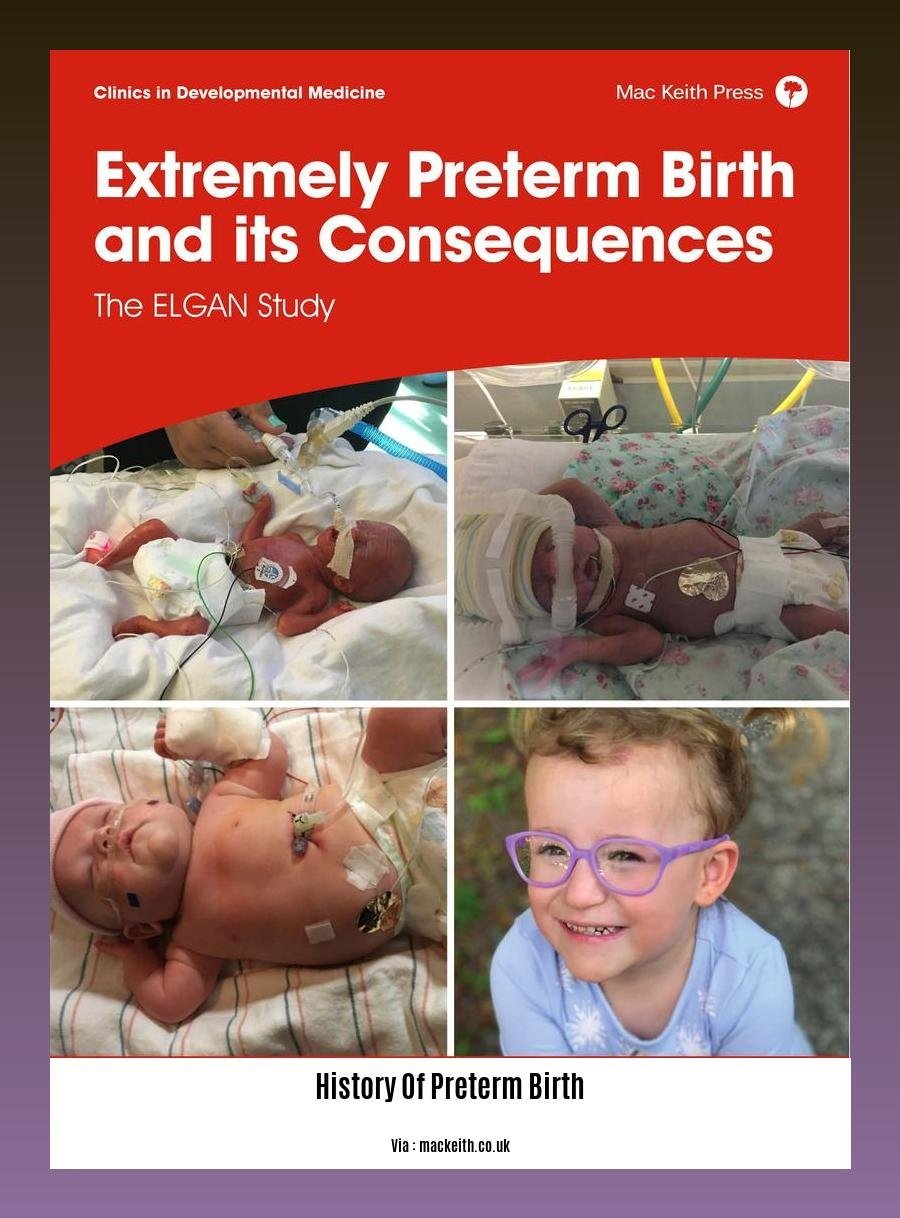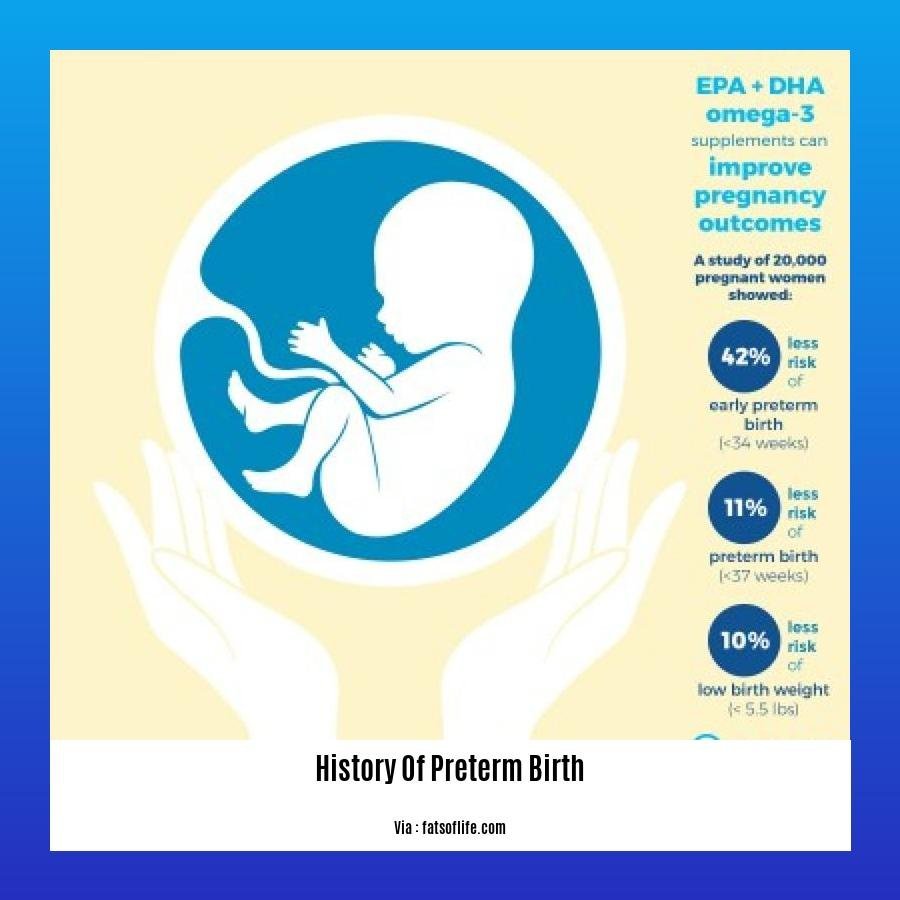Embark on the fascinating medical journey that is [- Exploring the History of Preterm Birth: A Medical Journey]. Cast your eyes through the annals of time as we delve into what was once a poorly understood phenomenon. Today, we know so much more about the causes and consequences of preterm birth, but what was the understanding of it in the past? Join us as we trace its historical trajectory, exploring the challenges faced and the advancements made over the centuries.
Key Takeaways:
- Preterm birth happens before 37 weeks of pregnancy.
- It can be caused by health problems in the mother or baby.
- Preterm births can be categorized as extreme (before 28 weeks), very (28-33 weeks), or moderate (34-37 weeks).
- Early preterm birth occurs up to 34 weeks, while late preterm birth occurs between 34-37 weeks.
- Worldwide, about 15% of preterm births happen before 32 weeks.
- Preterm birth can be dangerous and needs quick medical attention.
History Of Preterm Birth

Preterm birth, when a baby is born before 37 weeks of pregnancy, has a long and complex history. In the past, preterm birth was often fatal, but advances in medical care have significantly improved the survival rates of preterm infants.
Early History
- Preterm birth has been recognized for centuries. Ancient Greek and Roman writings describe premature infants, and Hippocrates noted that babies born before seven months often did not survive.
- In the Middle Ages, preterm birth was often considered a curse or punishment from God. As a result, preterm infants were often abandoned or left to die.
- During the Renaissance, there was a growing interest in the care of preterm infants. Physicians began to develop incubators and other devices to help keep preterm infants warm and alive.
19th and 20th Centuries
- In the 19th century, the invention of the incubator revolutionized the care of preterm infants. Incubators provided a warm, humid environment that helped preterm infants to survive and thrive.
- In the 20th century, there were further advances in the care of preterm infants. These advances included the development of new drugs to treat respiratory problems, the use of mechanical ventilation, and the development of specialized neonatal intensive care units (NICUs).
Present Day
- Today, preterm birth is still a major global health problem. Approximately 15% of all babies are born prematurely each year.
- Preterm birth can have a number of serious health consequences for infants. These consequences can include respiratory problems, developmental delays, and lifelong disabilities.
- There is still much that we do not know about preterm birth. Researchers are working to learn more about the causes of preterm birth and to develop new ways to prevent and treat it.
Conclusion
The History Of Preterm Birth is a long and complex one. Thanks to advances in medical care, the survival rates of preterm infants have improved significantly over the years. However, preterm birth remains a major global health problem, and there is still much that we do not know about it. Researchers are working to learn more about the causes of preterm birth and to develop new ways to prevent and treat it.
Do you have a history of preterm birth care? Understanding the History Of Preterm Delivery is crucial. If you’re History Of Preterm Delivery Currently Pregnant, learning about Family History Of Preterm Labor is essential. Knowing about your History Of Preterm Labor can help you make informed decisions during pregnancy.
Causes and Risk Factors

Preterm birth, the delivery of a baby before 37 weeks of gestation, is a complex issue with a myriad of causes and risk factors. While most preterm births occur spontaneously, some are triggered by medical reasons. These factors can be broadly categorized into two groups: maternal factors and fetal factors.
Maternal Factors:
- Previous preterm deliveries: Women who have had a preterm birth in the past are at an increased risk of having another one.
- Low birth weight: Babies born with low birth weight are more likely to be born preterm.
- Substance abuse: Smoking, alcohol consumption, and drug use during pregnancy can significantly increase the risk of preterm birth.
- Maternal health conditions: Certain health conditions, such as diabetes, high blood pressure, and infections, can increase the risk of preterm labor.
- Multiple pregnancies: Carrying twins or triplets can put extra strain on the uterus, leading to preterm birth.
Fetal Factors:
- Premature rupture of membranes: When the amniotic sac breaks too early, it can lead to an infection that can trigger preterm labor.
- Placenta abruption: When the placenta separates from the uterus too early, it can cut off the oxygen supply to the baby, forcing an early delivery.
- Uterine abnormalities: Structural problems with the uterus can interfere with the baby’s growth and development, leading to preterm birth.
Key Takeaways:
- Preterm birth is a serious health concern that can have long-term consequences for the baby’s health.
- The causes of preterm birth are complex and can involve both maternal and fetal factors.
- Understanding these risk factors is crucial for healthcare providers and pregnant women to take preventive measures.
Relevant URL Sources:
- World Health Organization: Preterm Birth
- National Institute of Child Health and Human Development: Preterm Birth
Consequences and Long-Term Effects
The consequences and long-term effects of preterm birth can be severe. As we explore the history of preterm birth, it’s essential to remember the lasting implications it has on the health of these vulnerable infants.
Key Takeaways:
- Lifelong Effects: Preterm birth can lead to lifelong disabilities, including cerebral palsy, mental retardation, visual and hearing impairments, and poor health and growth.
- Neonatal Care: Preterm infants often require specialized care in neonatal intensive care units (NICUs) due to their underdeveloped organs and immature immune systems.
- Global Burden: Globally, around 15 million infants are born preterm each year, making it a significant public health issue.
- Increased Risk Factors: Prematurity increases the risk of developing respiratory distress syndrome, cerebral palsy, and developmental abnormalities.
Citation:
– UK Healthcare: Short-Long-Term Effects of Prematurity
Modern Interventions and Future Directions
Modern Interventions for Preterm Birth
Advancements in medical interventions have significantly improved the outcomes of premature infants. Some of these interventions include:
- Progesterone Therapy: Supplementation with progesterone may reduce the risk of preterm birth in women with certain risk factors.
- Cervical Cerclage: A surgical procedure that stitches the cervix closed to prevent premature dilation.
- Bed Rest: In certain cases, strict bed rest may be recommended to reduce the pressure on the cervix.
- Neonatal Intensive Care (NICU): Highly specialized units equipped with advanced technology and expertise to care for premature infants.
Future Directions for Preterm Birth Prevention
Research is continuously exploring new frontiers to prevent preterm birth and mitigate its risks. Promising areas include:
- Artificial Intelligence (AI): AI can analyze vast amounts of data to identify patterns and predict risks of preterm birth.
- Stem Cell Therapy: Stem cells hold the potential to repair damaged tissues in the uterus and promote healthy pregnancy.
- Precision Medicine: Tailored therapies based on an individual’s genetic and health profile could provide personalized interventions for at-risk patients.
Key Takeaways:
- Modern interventions such as progesterone therapy, cervical cerclage, and NICUs have significantly improved the outcomes of premature infants.
- Future research directions focus on AI, stem cell therapy, and precision medicine to further reduce the incidence and severity of preterm birth.
Relevant URL Sources:
- Next Generation Strategies for Preventing Preterm Birth
- Recent Advances in the Prevention of Preterm Birth






![[History of EMS Timeline]: A Journey from Humble Beginnings to Sophisticated Healthcare history-of-ems-timeline_2](https://www.lolaapp.com/wp-content/uploads/2023/12/history-of-ems-timeline_2-150x150.jpg)





